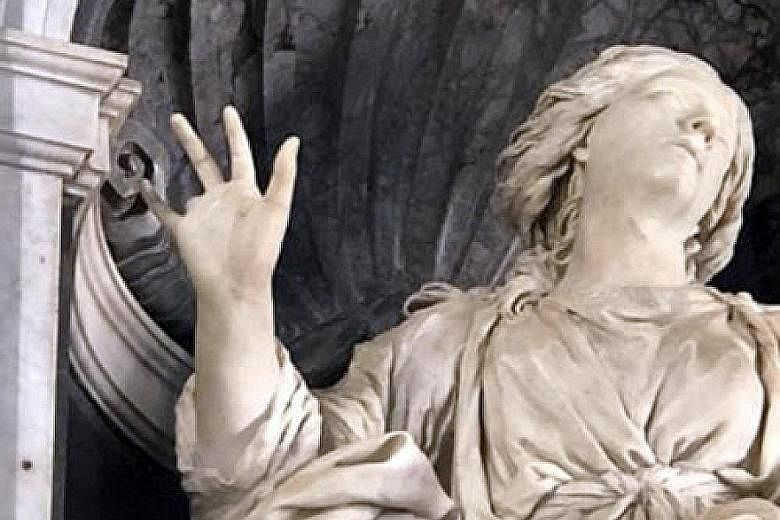ROME • Art history professor Giovan Battista Fidanza was taking a group of students through the baroque Church of Santa Bibiana two weeks ago when he made what he called a "macabre discovery".
Gian Lorenzo Bernini's oversized statue of St Bibiana, the sculptor's first public religious commission, dating to 1624, was missing the ring finger on the right hand.
The statue had been lent to a much-ballyhooed exhibition of Bernini sculptures at the Galleria Borghese in Rome, which ended on Feb 20.
The finger broke off when workers were returning the sculpture to its niche on the main altar of the Santa Bibiana church in Rome on April 24.
"At least it didn't pulverise; it came off in one piece," Reverend Augusto Frateschi, the parish priest, said in a telephone interview.
Restorers reaffixed the finger - but not before the Italian media got wind of the damaged digit, catapulting the statue into a terse moment of newspaper and television notoriety.
The incident also stirred an ongoing debate in the Italian art world on whether artworks should be lent for exhibitions, given that the risks greatly outweigh the benefits, critics said.
"After this incident, we have much to reflect on as art historians, which you are becoming," Prof Fidanza told students at a seminar on the damaged statue that he held at the University of Rome Tor Vergata, where he teaches.
"We know that moving works of art is always a huge stress for them," he added, noting that artworks suffered from shifts in temperature, humidity and from the transportation itself.
When a work of art is damaged, even if it is later repaired, "the integrity of the work is lost forever", he noted.
The broken finger "is a wound to the Baroque era".
Before the exhibition, the statue had been moved only once before - in 1943 - to protect it when the Italian capital was under attack during World War II.
Last September, it was transported to the loggia of the Borghese Gallery where it was restored ahead of the exhibition, which opened in November.
But Prof Fidanza questioned whether the statue - which had already been cleaned in 1997 - required a fresh makeover.
"Restorations should be like surgical operations - you don't operate for a cold," he said.
For some, the sculpture should never have been moved from its niche in Santa Bibiana at all.
"It is the first time where Bernini experimented with the unity of the visual arts, the fusion between architecture, painting and sculpture through the spectacular use of light," Mr Alessandro Valeriani, an expert in Baroque art who also teaches at Tor Vergata, said.
"To remove the sculpture from its context deprives it of the meaning that Bernini intended: a statue that interacts with the surrounding space."
If nothing else, the uproar over the lost digit has lured visitors to the church, a little-known Baroque jewel off the normal tourist trail, that also includes frescoes by another Baroque master, Pietro da Cortona.
"Visitors to Rome should be lining up to get into the church" because of its artistic importance, Prof Fidanza said.
Perhaps now they will.
NYTIMES

